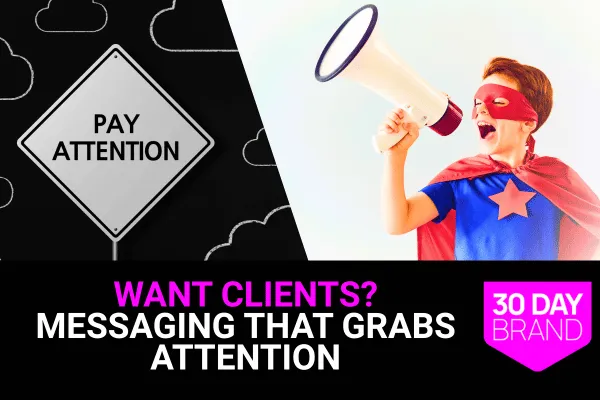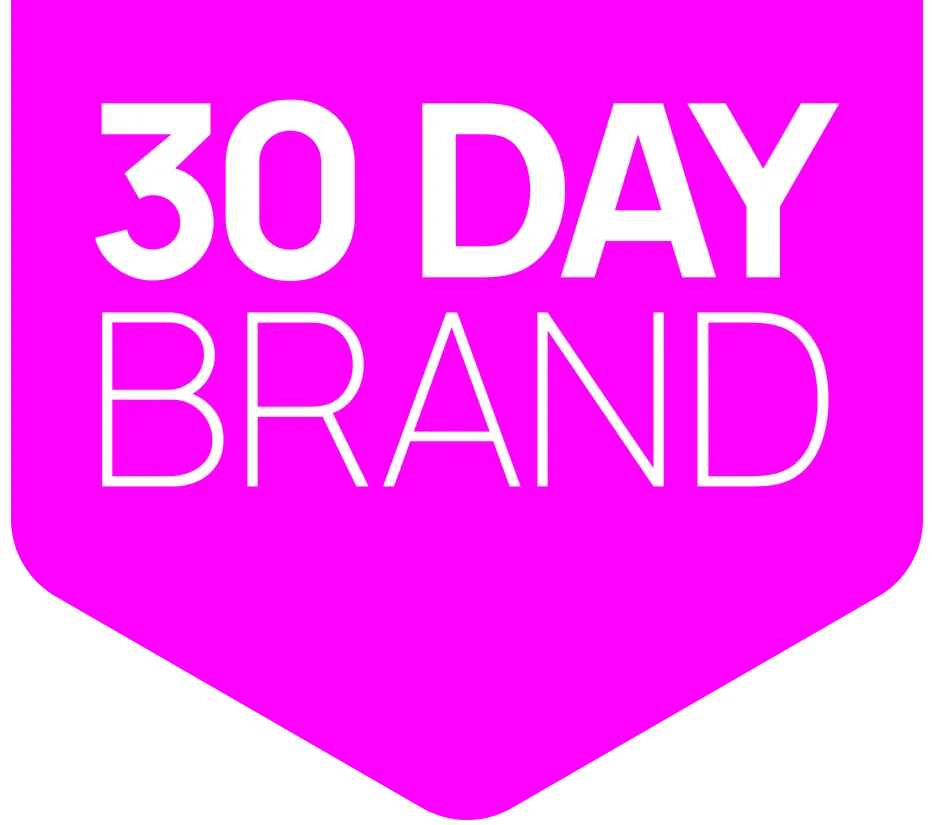
B2B Brand Messaging Framework: Crafting Messages That Convert
B2B Brand Messaging Definition
B2B brand messaging explains your value in clear, buyer-first language. It educates, persuades, and differentiates across stakeholders.
67% of buyers research before sales contact (HubSpot, 2024). Strong messaging wins attention early and prevents lost deals.
This framework is built for founder-led B2B firms that want shorter sales cycles and fewer pricing battles. Learn context in the B2B branding guide.
The 24 B2B Messaging Methods
Item 1: Four-Layer Messaging Hierarchy
Definition: One system from promise to channel copy.
How to implement:
Set brand promise.
Write 3–5 value props.
Add key messages with proof.
Tailor copy by channel.
Expected result: 56% higher recall (Salesforce, 2024).
Time required: 2 weeks.
See more in the brand messaging framework.
Item 2: Brand Promise
Definition: Your core commitment to customers.
How to implement:
Tie promise to business outcomes.
Keep under 10 words.
Remove buzzwords.
Expected result: Clear in 5 seconds (NN/g, 2023).
Time required: 2 days.
Item 3: Value Propositions
Definition: Specific, testable business benefits.
How to implement:
Quantify outcomes.
Align to CFO priorities.
Map to use cases.
Expected result: 52% higher proposal acceptance (Bain, 2023).
Time required: 3 days.
Item 4: Key Messages
Definition: Proof-backed claims supporting value props.
How to implement:
Add metrics and logos.
Preempt objections.
Localize by segment.
Expected result: 48% higher trust (Edelman, 2024).
Time required: 3 days.
Item 5: Tactical Messages
Definition: Channel-optimized copy.
How to implement:
Match length to channel.
Put verbs first.
End with one CTA.
Expected result: 44% more engagement (LinkedIn, 2024).
Time required: Ongoing.
Item 6: Context–Conflict–Resolution
Definition: Three-part formula for clarity.
How to implement:
State market context.
Expose costly problem.
Present measured fix.
Expected result: 23% conversion lift (HubSpot, 2024).
Time required: 2 days.
Item 7: Economic-Buyer Copy
Definition: CFO-ready benefits and ROI.
How to implement:
Lead with ROI.
Show payback period.
Add risk controls.
Expected result: 31% higher win rates (Gartner, 2023).
Time required: 2 days.
Item 8: Technical-Buyer Copy
Definition: Fit, security, and integration details.
How to implement:
List standards.
Map integrations.
Clarify rollout.
Expected result: Lower IT blockers.
Time required: 3 days.
Item 9: User-Buyer Copy
Definition: Daily efficiency and ease-of-use.
How to implement:
Show time saved.
Explain training needs.
Add screenshots.
Expected result: 30% productivity gains.
Time required: 2 days.
Item 10: Industry-Specific Variants
Definition: Messages tuned to sectors.
How to implement:
Mirror industry terms.
Address compliance.
Insert sector metrics.
Expected result: 73% higher relevance (CMI, 2024).
Time required: 1 week.
Item 11: Company-Size Variants
Definition: Enterprise, mid-market, SMB tracks.
How to implement:
Enterprise: scale and governance.
Mid-market: speed and growth.
SMB: simplicity and cost.
Expected result: Higher fit scores.
Time required: 3 days.
Item 12: Journey-Stage Tracks
Definition: Align copy to funnel stage.
How to implement:
Teach at awareness.
Compare at consideration.
Prove at decision.
Expected result: Shorter cycles (Forrester, 2024).
Time required: 1 week.
Item 13: Objection Handling Blocks
Definition: Prebuilt answers to pushbacks.
How to implement:
List top five objections.
Pair with proof.
Place in decks and pages.
Expected result: Fewer stalls.
Time required: 2 days.
Item 14: Message Map
Definition: One-page promise-to-proof table.
How to implement:
Columns: Promise, VP, Proof, CTA.
Rows per segment.
Keep under one page.
Expected result: Consistent delivery.
Time required: 1 day.
Item 15: Plain-Language Rewrite
Definition: Remove jargon and filler.
How to implement:
20-word max sentences.
One idea per line.
Kill buzzwords.
Expected result: 84% better comprehension (NN/g, 2023).
Time required: 2 days.
Item 16: Homepage Message Stack
Definition: Clear homepage flow.
How to implement:
10-word headline.
Specific subhead.
Three benefits with numbers.
Expected result: Higher conversion rates.
Time required: 2 days.
See homepage structures.
Item 17: Service Page Outcomes
Definition: Outcomes before features.
How to implement:
Lead with results.
Tie features to outcomes.
Add case metrics.
Expected result: Higher demo rates.
Time required: 3 days.
Item 18: LinkedIn Hook Lines
Definition: Short scroll-stoppers.
How to implement:
Start with a stat.
Ask sharp questions.
Give a takeaway.
Expected result: More opens and clicks.
Time required: Ongoing.
See LinkedIn strategy.
Item 19: Email Subject Patterns
Definition: Four headline angles.
How to implement:
Test four weekly.
Keep under 50 chars.
Avoid spam words.
Expected result: Higher open rates.
Time required: Ongoing.
Item 20: CTA Library
Definition: Clear action prompts.
How to implement:
One CTA per asset.
Promise a gain.
Link to audit.
Expected result: More qualified actions.
Time required: 1 day.
Target: Brand Message Audit.
Item 21: Proof Blocks
Definition: Logos, quotes, and stats.
How to implement:
Use three per page.
Place near CTAs.
Keep quotes short.
Expected result: Trust lift (Edelman, 2024).
Time required: 2 days.
Item 22: A/B Headline Tests
Definition: Controlled experiments.
How to implement:
Change one element.
Run to significance.
Log winners.
Expected result: Sustained gains.
Time required: Ongoing.
Item 23: Sales Script Sync
Definition: Sales mirrors marketing copy.
How to implement:
Train on message map.
Shadow calls monthly.
Update quarterly.
Expected result: No mixed signals.
Time required: Ongoing.
See messaging reference.
Item 24: Visual Alignment
Definition: Design supports clarity.
How to implement:
Clean layouts.
Legible typography.
Consistent style.
Expected result: 42% higher credibility (Lucidpress, 2023).
Time required: 2 weeks.
See identity design guide.
Quick Implementation Guide
Start: Audit all pages and decks.
Then: Build promise, value props, and message map.
Measure: CTR, demo rate, SQLs, win rate.
Key Statistics
67% of the journey is self-serve (HubSpot, 2024).
90 days cycle cut with clear messaging (Forrester, 2024).
23% revenue lift with consistent brands (Lucidpress, 2021).
FAQ: B2B Brand Messaging
Q: How fast do results show?
A: Cycles shorten in 90 days (Forrester, 2024).
Q: What makes copy convert?
A: Outcomes first, proof near, one clear CTA.
Q: How many value props to keep?
A: Three to five. More dilutes focus.
Q: Do roles need separate copy?
A: Yes. Economic, technical, and user buyers.
Q: What’s the best homepage stack?
A: Headline, subhead, benefits, proof, CTA.
Q: Where do CTAs link?
A: Always to the audit.
Q: How to avoid generic tone?
A: Use numbers, plain words, client quotes.
Q: Should LinkedIn match the site?
A: Yes. Same core message, channel fit.
Q: How often to test headlines?
A: Monthly, with documented winners.
Q: Where can I learn positioning?
A: See the positioning guide.
Let’s Fix Confusing Messaging: Next Steps
Confused buyers don’t buy. Clear messaging drives faster cycles and higher conversions.
Run the free Brand Message Audit. It shows gaps and next actions in under three minutes.










